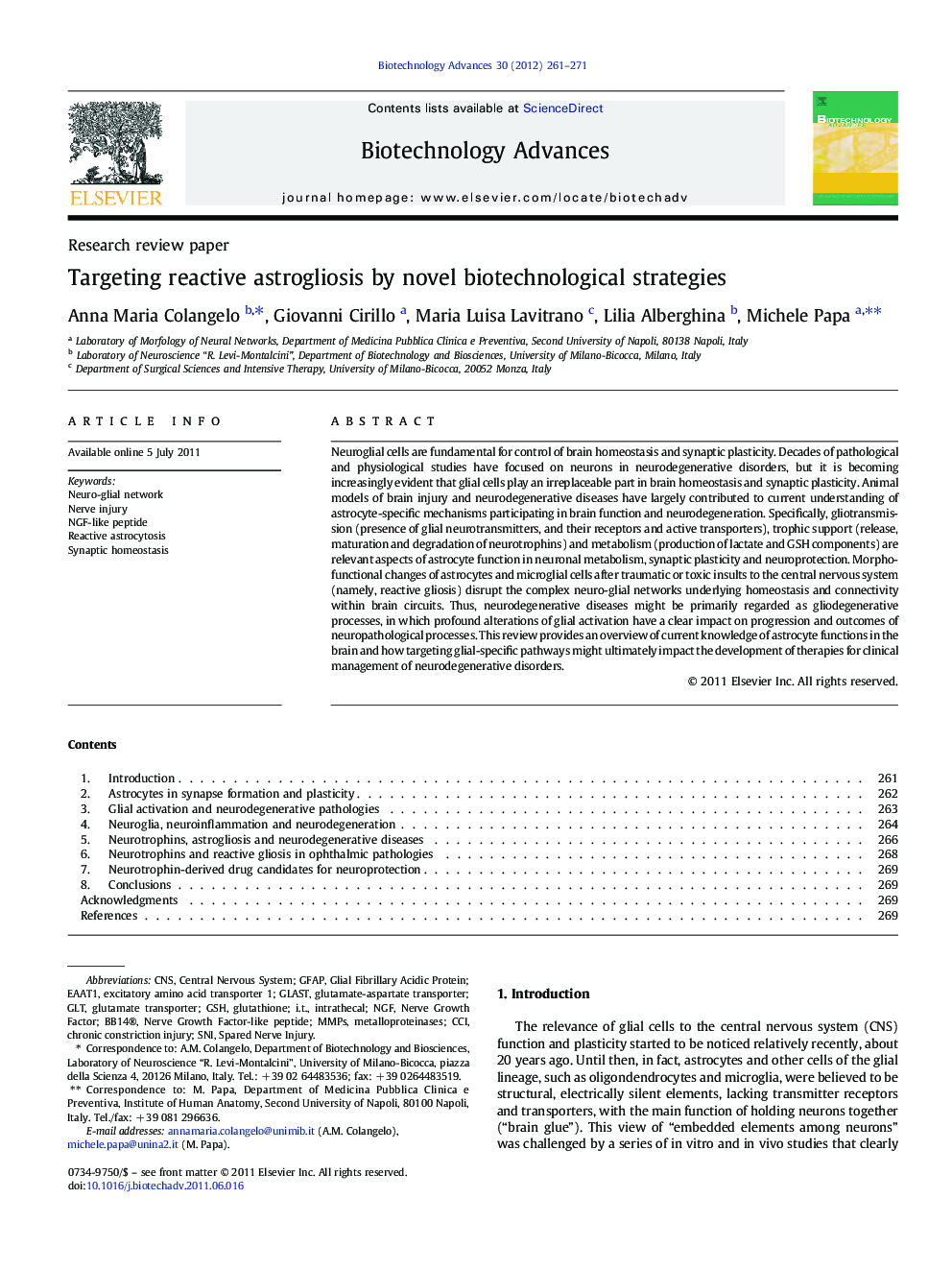| Article ID | Journal | Published Year | Pages | File Type |
|---|---|---|---|---|
| 14601 | Biotechnology Advances | 2012 | 11 Pages |
Neuroglial cells are fundamental for control of brain homeostasis and synaptic plasticity. Decades of pathological and physiological studies have focused on neurons in neurodegenerative disorders, but it is becoming increasingly evident that glial cells play an irreplaceable part in brain homeostasis and synaptic plasticity. Animal models of brain injury and neurodegenerative diseases have largely contributed to current understanding of astrocyte-specific mechanisms participating in brain function and neurodegeneration. Specifically, gliotransmission (presence of glial neurotransmitters, and their receptors and active transporters), trophic support (release, maturation and degradation of neurotrophins) and metabolism (production of lactate and GSH components) are relevant aspects of astrocyte function in neuronal metabolism, synaptic plasticity and neuroprotection. Morpho-functional changes of astrocytes and microglial cells after traumatic or toxic insults to the central nervous system (namely, reactive gliosis) disrupt the complex neuro-glial networks underlying homeostasis and connectivity within brain circuits. Thus, neurodegenerative diseases might be primarily regarded as gliodegenerative processes, in which profound alterations of glial activation have a clear impact on progression and outcomes of neuropathological processes. This review provides an overview of current knowledge of astrocyte functions in the brain and how targeting glial-specific pathways might ultimately impact the development of therapies for clinical management of neurodegenerative disorders.
